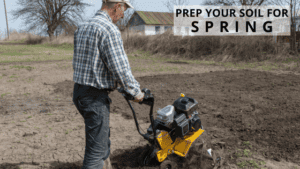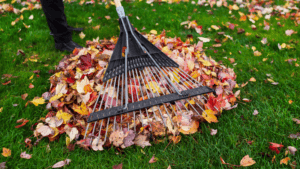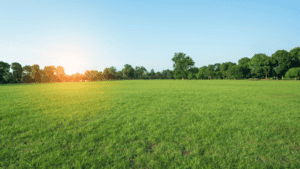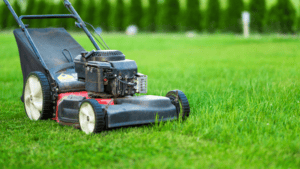
Garden Area:
Compost
In the weeks before you plant, take some time to work in any cover crops that you planted and cover your garden with a ½” to 1” of good compost. You want to provide your soil with a fresh batch of nutrient-rich matter so that it will be able to properly nourish and water your plants.
Cultivate
Gravity, storms, and the many other forces in nature and environment can compact your soil over time, loosening it up before planting is the priority. A young bed needs to have rocks and roots removed with a shovel or digging fork when it’s dry and crumbly only. If you have an established bed, break up the soil. You want to prepare your garden by helping dry out and warm up.
Fertilize
“Top dress” beds with compost or well-seasoned manure, once the ground is dry enough. This will prepare the soil for planting season. Do not dig up the bed if you have an established bed as they already have a complex ecosystem in their soil that is best left to itself. When you add nutrients to the top of the soil, it will work its way down into the deeper soil.
Lime
If you have soil with a pH of or below 6.2, lime will be a beneficial addition. You can use a soil pH test kit to determine what your level is. Dolomite is recommended and is the finest grind. Hydrate lime or ‘quicklime’, is not recommended because it can change the soil pH too rapidly. Lime should be added several weeks before you plant and newly limed beds should be covered with plastic during the heavy spring rains to avoid the runoff.
Repair
Now is a great time to fix bowed or leaning sides on your raised beds. Drive new stakes on the inside of the sideboards, push the sideboards up to the stakes and fasten with screws or nails. Fences and trellises are easier to repair now when there is less growth to disturb and fence posts are great to do after the spring rains drain through the ground.
Lawn:
Rake and Seed
Rake your lawn to remove winter and dead debris to help bring light and air down to the soil level and encourage grass to grow. Re-seed bare patches of lawn, be sure to rake bare spots firmly with a metal rake. Spread grass seed evenly over the bare spot and keep water until the seeds germinate and new grass starts growing.
There is much to do to keep you busy while the cycle of the seasons begins to move into warmer months. Just be sure to dress appropriately for the snow, wind and rain that accompanies the end of winter.


